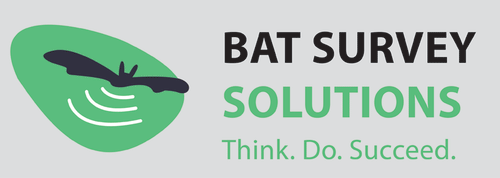Acoustic Survey Methods Courses
Our Acoustic Survey trainings provide comprehensive and semi-customizable introductions to using bat detectors as non-contact survey methods for documenting bat activity and occupancy in any North American habitat. We cover active, passive, and mobile acoustic transect demonstrations and feature standardized NABat survey protocols. Field recordings are collected during in-field practicums and include data collection at actual NABat GRTS cells.
Instructors cover techniques for properly deploying bat detectors and for conducing mobile acoustic transects. We focus on equipment selection; configuring appropriate settings; and data collection, organization and management workflows. Students learn how to post-process data with either Kaleidoscope PRO or SonoBat software programs. With guided, hand-on practice to interpret "auto-classification" decisions and how to manually confirm or reject the computer-generated "probable species presence" results, students become empowered to design and conduct their own acoustic surveys to satisfy any local or national protocols.
2025 Acoustic Survey Methods Courses
Tucson AZ: 14 - 19 July 2025 (semi-custom)
San Marcos TX: 9-13 September 2025 (short course)
(All courses are ideal for bat-workers participanting in the NABat Program)
In-field Demonstrations and Practicums will vary at each venue and according to group interests and/or local conditions during the training. Curriculum covers all topics from survey planning and site selection to equipment and recording tips, analysis, manual vetting practice, results analysis, and project reporting - including uploads to continental bat survey databases. More information available below or visit venue pages for detailed agendas.

Additional Program Details
The Acoustic Survey course combines pre-course reading and resources; on-site classroom learning; copious handouts and take-home materials; and in-field demonstrations, including actual in-field data-collection and classroom analysis that contribute to on-going surveys. This provides students with the full range of experience with techniques and technologies available for surveying bats in North American habitats.
Participants will learn how to speed post-processing and enhance call analysis while illustrating the importance of manually vetting outputs from automated classifiers. Instructors show how to review recordings to ensure accurate identification and occupancy results. We also guide participants on how to interpret the automated outputs generated by Kaleidoscope Pro and SonoBat, how MLE values are calculated to predict species presence, and how to examine detector log-files to determine survey "up-time."
Courses provide realistic experiences with myriad details that are likely to occur during actual acoustic field surveys. Class size is limited to 15 students with a 1:5 instructor student ratio. We cover equipment selection, programming recording settings, bat detector deployments, call-collection, retrieving files and data management, post-processing and acoustic analysis. This training is suitable for anyone conducting acoustics anywhere in North America, regardless of involvement with the NABat program. It is ideal for students just starting out in the field of acoustic monitoring and will provide opportunities for participants to “test drive” bat detectors before purchasing their own equipment. It also gives seasoned bat-workers chances to use the latest detector and microphone technologies to expand their skills with acoustic surveys.
